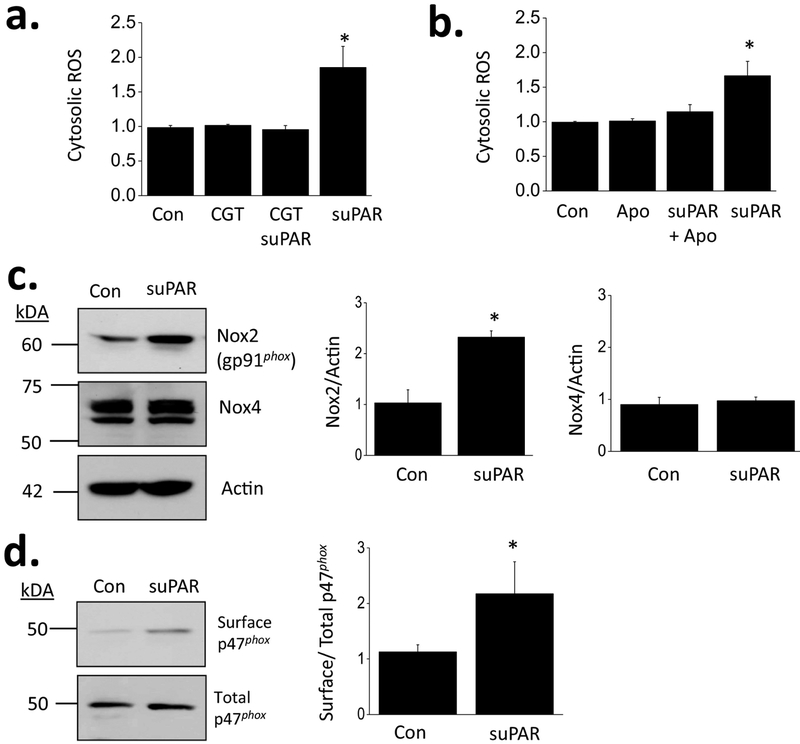Figure 1.
Increased ROS generation in podocytes evoked by suPAR and Nox2 in mouse podocytes. (a) Fluorescence assay showing effects of recombinant suPAR (10 ng/ml for 24 hr) on cytosolic ROS abundance in immortalized mouse podocytes. The effect of suPAR was blocked by concurrent exposure to 1 μM cilengitide (CGT), an inhibitor of signaling through αVβ3 integrin. Ordinate shows fold increase in signal over control. In this and all subsequent panels, error bars denote SD. (b) The effects of suPAR on ROS abundance were blocked by concurrent exposure to 10 μM apocynin (Apo), an inhibitor of NADPH oxidase Nox2. (c) Immunnoblots showing that exposure to suPAR increases abundance of heme-containing catalytic subunits of Nox2 but not of Nox4. (d) Cell surface biotinylation assays showing that suPAR treatment increases abundance of Nox2 regulatory subunit p47phox at the cell surface. Bar graphs in (c) and (d) show results of densitometric analyses.

